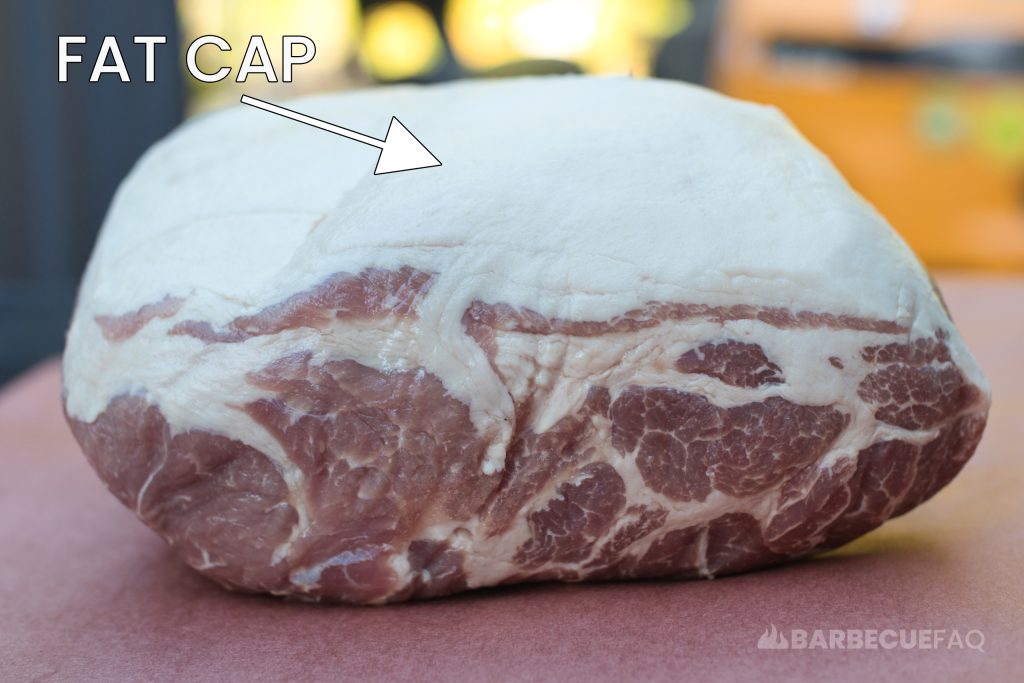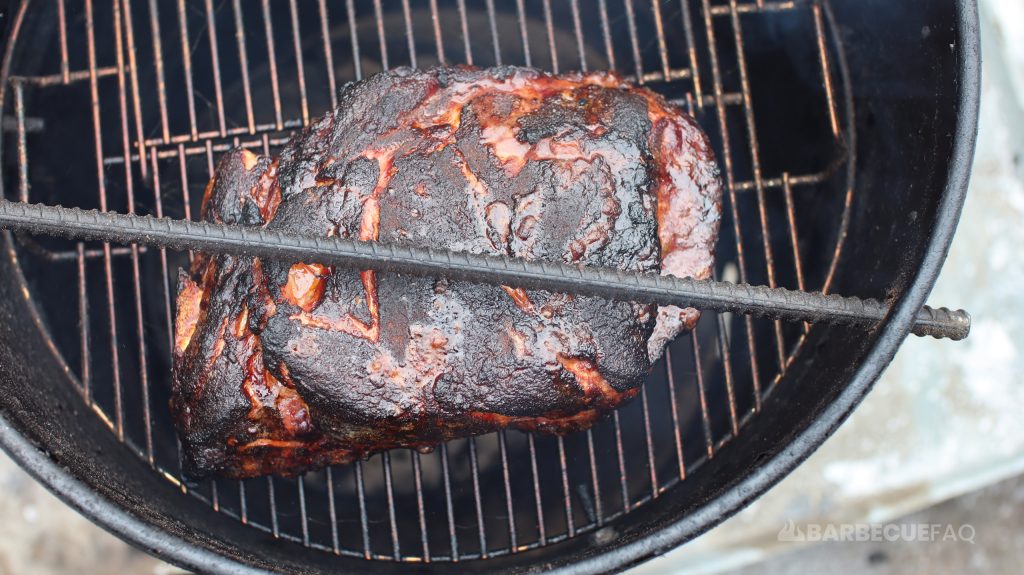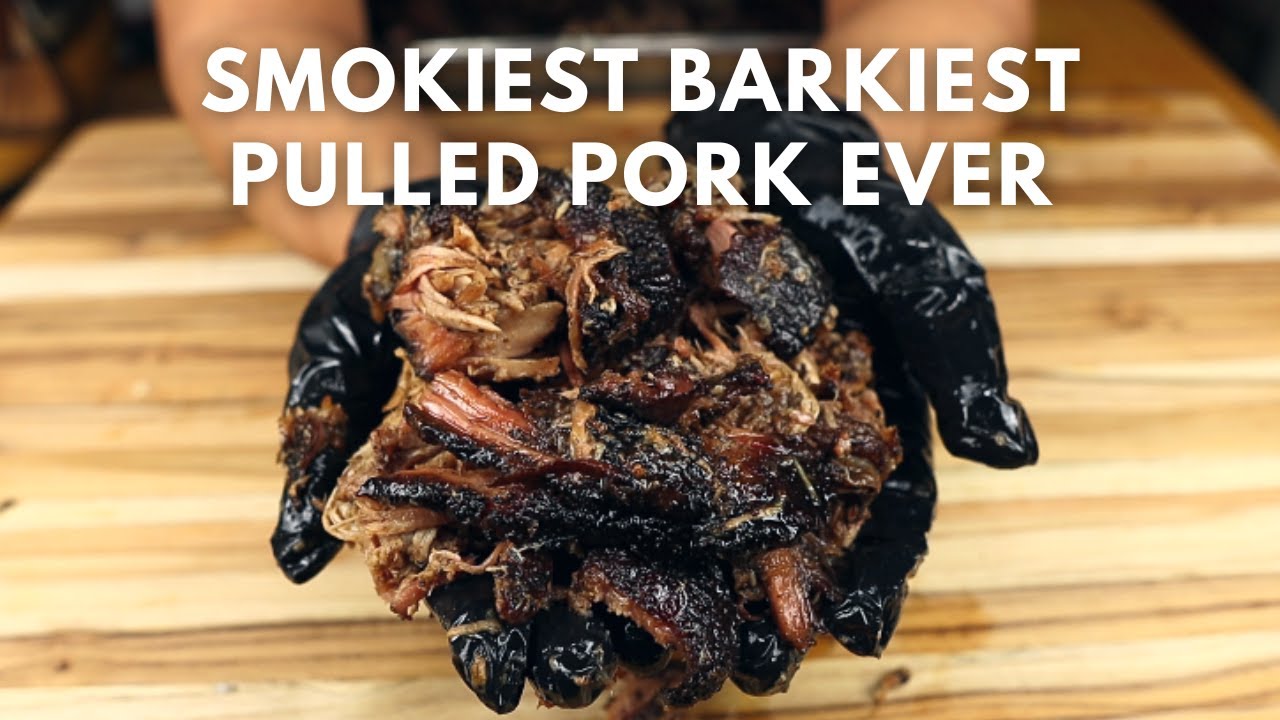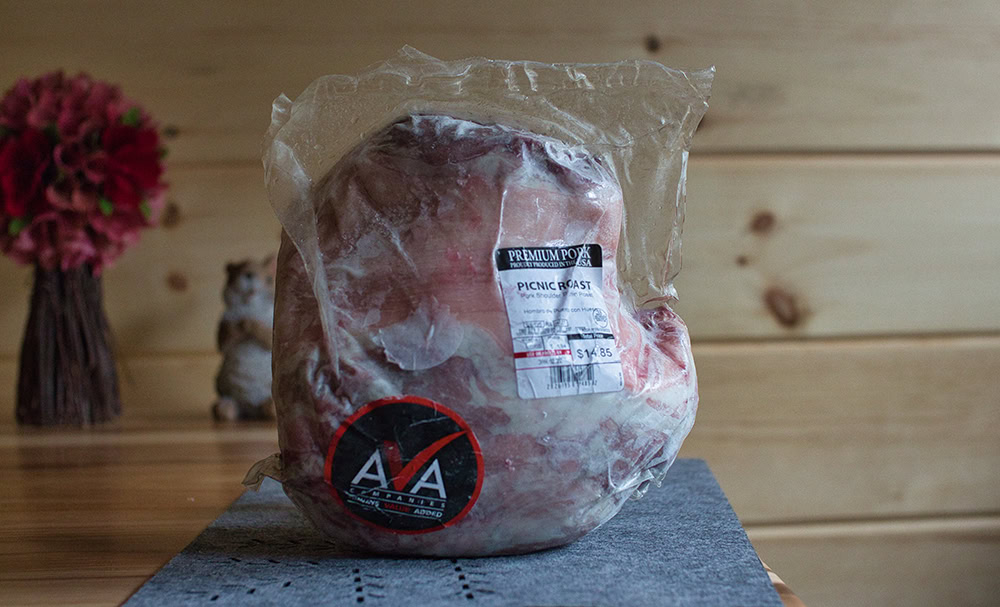In general, the fat cap on a pork butt should be pointed at the heat source as it’s rendered better.
| Type of Smoker | Fat Side Up, Down, or Flipped |
|---|---|
| Offset smoker (standard and reverse flow) | Up |
| Weber Smokey Mountain (WSM) as well as most water smokers | Down |
| Pellet Smoker | Flipped OR Down |
| Weber Kettle | Up |
| Electric Smokers | Down |
| Gas Smokers | Down |
| Gas Grill | Down |
| Drum Smokers | Down |
| Kitchen Oven | Up |
| Crockpot | Down |
Note: This table isn’t all encompassing; I did my best to list the most common smokers and cookers that are used.
Does it Really Matter if the Fat Cap is Up or Down?
After testing all the above over the years – in my opinion – it doesn’t really matter how you put the pork butt on the smoker.
BUT
If you are a person who leaves the fat cap on, I’d suggest putting the fat cap towards the heat source as the fat cap is rendered better.

Pork butt naturally contains tons of intramuscular fat.
This is the biggest reason it’s the best meat to smoke for a beginner; The goal is to pull it so overcooking isn’t super problematic.
For that same reason, the fat cap doesn’t tend to matter much either.
In most cases, all this fat won’t even render and you’re left removing it regardless.
Pork Butt Has a “Faux” Fat Cap and Can Even be Removed
Looking closer at the fat cap you’ll start to notice that there are 3 layers:
- Exterior hard fat (faux fat cap)
- A thin layer of meat (false lean)
- Renderable fat (layer below the false lean)

Here’s me removing this cap:

The exterior hard fat and the thin layer of meat below it are what people call the “false cap.”
If you leave the “faux cap” and carefully remove it after cooking, the “faux lean” is what people call “the bacon” of the pork butt.
Exterior hard fat doesn’t tend to render well nor is it palatable – that’s why people will remove large chunks of fat when they go to pull the meat.
I’d also wager to say people like edible bark more than they like fat.

People who leave the fat cap on will do things like:
- Score/cross-hatch the surface down to the meat. Again though, are they actually hitting the shoulder meat or false cap meat? I’d wager to say the latter.
- Leave the fat cap on and remove it after smoking. This idea results in way less bark if you just removed it from the get-go.
- After smoking they’ll pull the pork and then remove fat that didn’t render.
Also re:”rub penetration” – the only ingredient that will “penetrate” is salt. The rest sits on the surface regardless. This is why you should re-season the pork after pulling.
Food for thought on Increasing “Barky-ness”
In a recent video by Joe Yim, he debones a pork butt and then cuts the pork butt into strips.
The sole intention of doing this is to maximize the bark yield; Or as Joe puts it – “tenderness to barkyness” ratio.
Joe smokes his pork butt on a Loaded Wichita Yoder, offset smoker which features a removable heat plate; In another video he states he doesn’t use that plate.
Even with the heat plate removed – which turns it into a standard flow offset – he opts to put the fat cap down on those strips (the opposite of the advice in this article).
He still turns out meat that looks wonderful.
Like I said, it doesn’t matter much.
Pork Butt Fat Side Functioning as a “Heat Shield” for Hot and Fast Smokers
On Barrel cookers, the fat cap can work to entirely shield the meat from burning.
Here’s a pork butt fat side down on my PBC:

Typically what will happen is the false cap will borderline become charred/inedible but it will quite literally peal off the bottom and the layers below it will be rendered well.
I discard this piece of charred fat and pull everything together.
While this strategy works, it also removes a A LOT of your bark.






4 comments
Tom
Hello, Dylan. Good stuff about the false cap. I was only trimming off the skin and most of the outer fat. I’m intrigued in buying a reverse offset smoker. Most likely the Oklahoma Joe. Any thoughts on offset smokers? Right now I only have a Weber kettle. Thanks
Dylan Clay
Hi Tom!
So I can really only speak to my own circumstances as yours may differ from mine.
To preface: I’ve smoked a number of things on both offset and reverse flow offset smokers (I like regular offsets more), but where I’m from Barbecue isn’t super popular, even though I’ve been doing it for over half my life.
These days, almost all the food I smoke is on my Weber Kettle, PK Grill, Electric Smoker, Barrel Cooker, and Pellet Smoker.
The only people that eat my BBQ are myself, my family, and my friends. Meaning I don’t need a huge offset to cook a 13 lb brisket – none of these people (which is a max of 10-20 at a time), will notice a difference, only I will.
All my smokers I use for different things.
Does the food taste “better” on an offset?
I personally think so, but if you’re someone who only Barbecues every other weekend, I wouldn’t necessarily say it’s “worth it.”
Pits can be expensive but Oklahoma Joe I’ve tested twice I think – their regular flow Longhorn and it was overall solid eats.
I also know the Old Country Pecos is popular in the same price range (really the thing that bumps the price is the gauge of steel).
Likely from there (after 1-3 years of use) if you find that you’re both having fun and the food is substantially better, I’d look into other models of offset like those built by M&M, Mill Scale, Lone Star Grillz, Yoder, etc. Basically a relic that you could pass on for generations.
Hope that gives some insight, even if it was a ramble.
-Dylan Clay
Marty
Hi Dylan, thanks for posting this — it’s very informative. I like to make pulled pork in a slow cooker during the winter months. I don’t have a smoker. I live in NYC so I actually don’t even have a yard. I’ll just give the meat a spice rub and slow cook it for 8-10 hours until it’s fall-apart tender, and then I’ll sear it in a pan for a little char. Do you have any thoughts on what to do with the fat cap for slow cooker pulled pork?
Many thanks,
Marty
Dylan Clay
Hey Marty!
Good question – so with how slow cookers work, the heat source comes from the bottom and then works its way up the sides (like with a crockpot) – meaning, I’d go fat side down.
Like I said in my article though – the false cap is a real thing and even if you entirely opt to remove the “fat cap” the pork butt has so much intramuscular fat, it doesn’t really matter how you opt to orient it.
Also in terms of searing – if you’re going to – I’d sear first and then put the meat in the crock pot; Develop that maillard reaction/flavor from the get go and then allow flavor to develop within the crockpot.